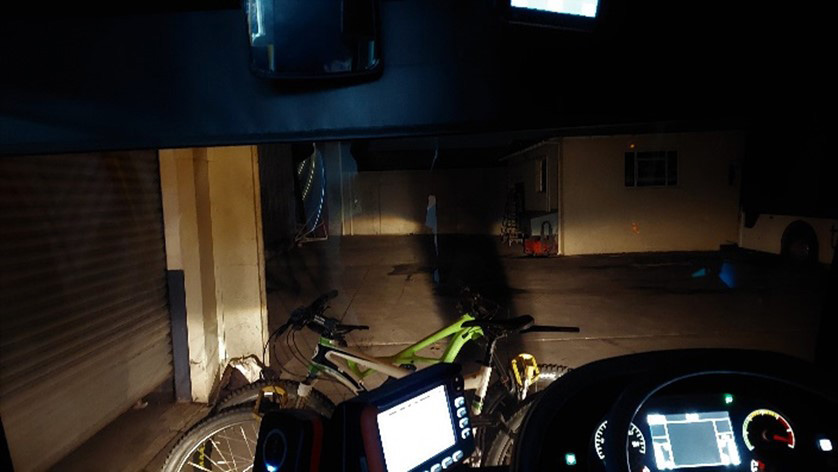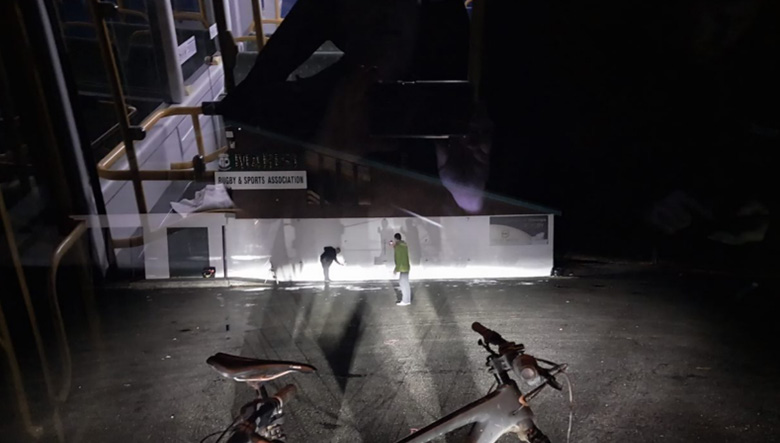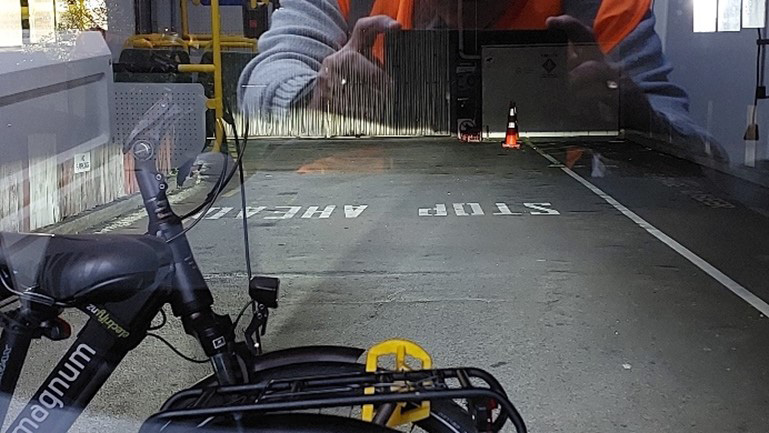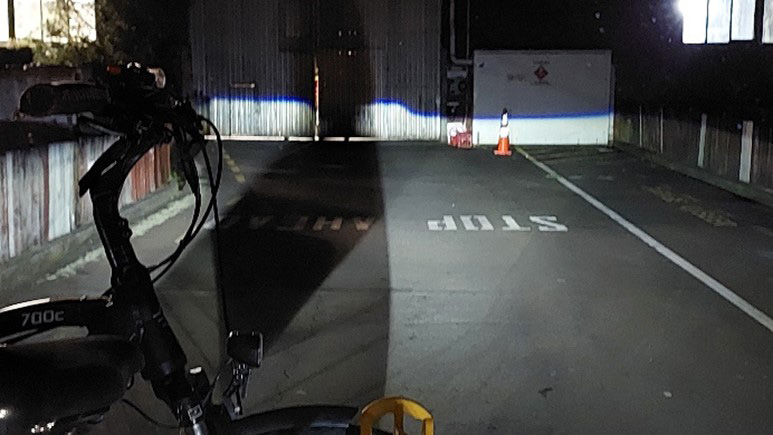
October 2024
Industry Alert
Bike racks on buses at night
Public transport bus operators should check
Possible solutions to consider
their visibility when using bike racks at night. Confirm the root cause of the lack of illumination. In the
On some bus models fitted with a bike rack, carrying
case of the bus NZTA tested, the low-beam headlamps
bikes at night can partially obscure the headlamps. If the
were:
headlamps can’t provide enough illumination to drive
• relatively dull
safely, the bus won’t comply with the Land Transport
• immediately behind the bike tyres
Rule: Vehicle Lighting 2004.
• a smaller diameter.
You must confirm any possible solution is effective
and compliant by repeating the tests under
What bus
operators need to do.
Relocating the low-beam headlamp
From investigations to date, illumination is compliant if
the low-beam headlamps are positioned either low down,
below the bike rack, or toward the edges of the bus rather
than more centrally.
Moving low-beam headlamps below the bike rack can
Figure 1: Poor illumination and dark shadows from bikes
prevent bikes obscuring them. The headlamps are aimed
downward to prevent glare to other road users.
What bus operators need to do
Moving the low-beam headlamps further outboard
ensures that the sides of the road are still illuminated.
Check if your buses are affected
Any relocated headlamp will need to meet all
For each bus model, confirm driver visibility of the road
requirements of the lighting rule.
ahead and the sides where pedestrians would be.
• We recommend driving the bus at night in an area
Replacing the headlamp with a brighter one
without street lighting, with and without bikes on
Fitting brighter headlamps (for example, LED low-beam
the rack. We recommend testing a variety of bike
headlamps) could increase the illumination sufficiently,
sizes. Check if there’s sufficient illumination to drive
as long as any area in shadow created by one lamp is
the bus safely.
sufficiently illuminated by the other for good driver
• You can also do a static test in a dark, unlit area.
visibility.
Make sure that there is no danger from other
Auxiliary low-beam headlamps
vehicles. With and without bikes on the rack, assess
NZTA will consider issuing exemptions to allow you to
the visibility of pedestrians and the area ahead over
fit auxiliary headlamps to the bike rack that switch on
a range of distances.
when the bike rack is deployed. The existing low-beam
If your buses are affected
headlamps must remain unaffected.
If there isn’t sufficient illumination to drive safely, you
You’ll need to test this solution is effective at illuminating
need to take steps to comply with the lighting rule.
the road ahead and sides of the road, and that glare
This alert gives possible solutions to consider.
doesn’t affect other road users. Include a test for any
Restrict using bike racks to daytime hours until
bounce of the bike rack over uneven surfaces.
resolved. We encourage operators to achieve
compliance as soon as practicable.


 How this was discovered
How this was discovered
This concern was brought to our attention by various
sources, including bus drivers who had difficulty seeing
the road ahead when carrying large-tyred bikes at night.
We haven’t been alerted to any crashes related to this
problem.
NZTA has carried out testing to assess the situation. We
tested two Optare models, one with halogen headlamps
and one with LED headlamps. When using the bike rack
at night, there wasn’t sufficient illumination to comply
Figure 2: Pedestrians clearly visible, road illuminated.
with the lighting rule.
Although there are shadows from a headlamp, the road
Investigations concluded that on many bus models there
is sufficiently illuminated by the other headlamp.
is still enough light to comply with the lighting rule when
bikes are carried at night. However, it’s important to
check all models for non-compliance. We’ve issued this
alert as a result.
All buses must comply
It’s important that all buses are compliant with the
lighting rule – this includes all existing buses in the fleet,
and all future buses added to it. Police could carry out in-
service checks at any time, and any non-compliant buses
would need to be brought into compliance.
Figure 3: The road is sufficiently illuminated.
Signage on the road is clearly read, there are slight
shadows from the bike.
Figure 4: Dark shadows create non-compliance.
Dark shadowing creates an area where there is
insufficient illumination of the road ahead.
More information
For further information and support email [email address]
NZ Transport Agency | Bike racks on buses at night
2



